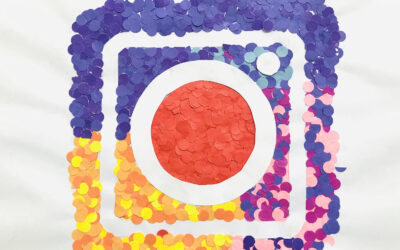There is no doubt that a user’s first impression of your company and its services or products determines whether they will stay with you for longer or not. This is why it is so important to design user interfaces (UI) and user experiences (UX) that create a positive first impression on your users.
Fortunately, both UI and UX designers are responsible for ensuring that digital products have a pleasant appearance and are also easy to use. The two terms are often used interchangeably, but they have different meanings. So, let’s check out the main differences between UI vs UX design in this article.
What’s User Experience?
User experience, also called UX, refers to the overall experience a person has while using a product or service. This includes all aspects of the interaction, such as how easy it is to use, how enjoyable it is, and how well it meets the person’s needs.
user interface design, or UI, refers specifically to the design of the graphical interface that people use to interact with a product or service. This interface can include things like menus, buttons, icons, and layout. A good UI is important for making a product or service easy to use and enjoyable, but it’s only one part of the overall UX.
How Does User Experience Design Influence User Behavior?
User experience design is all about creating a smooth and intuitive user interface that makes it easy for users to interact with a product, service, or website. By making the user experience as seamless as possible, designers can encourage users to keep using a product or service. In contrast, user interface design focuses on the look and feel of a product or service. While user interface design is important for creating a visually appealing product, it’s not as concerned with the overall user experience. Creating a well-designed user interface is one way to create a good user experience, but other factors contribute to a positive experience as well.
Challenges of UX Design
User Experience (UX) design and User Interface (UI) design are often confused with one another. While they are both important aspects of the design process, they are quite different. Here, we will discuss the challenges of UX design in more depth.
One of the biggest challenges faced by UX designers is user adoption. Designing a great user experience is pointless if users don’t use it. This can be a challenge for many reasons, such as users being set in their ways or not understanding how to use the new system.
Another challenge faced by UX designers is stakeholder buy-in. For a project to be successful, all stakeholders need to be on board with the vision. This can be difficult to achieve when there are competing visions for the project or when stakeholders don’t understand the value of UX design.
Lastly, designing for edge cases can be a challenge for UX designers. Edge cases are those that fall outside of the normal flow of use for a product or service. For example, what happens if a user tries to use your product unexpectedly? Or what happens if there is an error? Anticipating these edge cases and designing for them can be challenging but is essential for creating a great user experience.
The Importance of Information Architecture
User experience (UX) and user interface (UI) design are two important facets of creating successful web and app design. But what exactly do they mean? And what’s the difference between them?
In short, UX design is all about how a user feels when using a product, while UI design is about how a product looks. Both disciplines work together to create smooth, intuitive, and visually appealing digital products.
Let’s take a closer look at each one:
User Experience Design: User experience design focuses on the overall feel of using a product. It takes into account things like ease of use, navigation, branding, and emotion. The goal of UX design is to make sure that users have a positive experience when using a product. This discipline often overlaps with other fields such as psychology and human-computer interaction (HCI).
User Interface Design: User interface design focuses on the individual elements that make up a product’s interface. This includes things like buttons, icons, typography, and layout. The goal of UI design is to create an interface that is both visually appealing and easy to use. UI designers often work closely with visual designers and developers to bring their designs to life.
What is a User Interface?
User interface (UI) design is all about how a user interacts with a digital product, such as a website or app. It’s the look and feel of the product, and how easy it is to use. UI design is important because it can make or break a user’s experience with a product.
User experience (UX) design is all about how a user feels when using a digital product. It’s the overall experience of using the product and includes everything from ease of use to emotional reactions. UX design is important because it can make or break a user’s loyalty to a product.
Both UI and UX are important for creating successful digital products, but they are different disciplines with different goals.
Why Do We Need a UI Designer?
There are a lot of misconceptions about UI design and what UX design is. Many people believe that they are the same, but there are quite a few differences between the two disciplines.
User interface (UI) design is all about the look and feel of a product. It’s the designer’s job to make sure that the product is visually appealing and easy to use. User experience (UX) design, on the other hand, is more concerned with how a product feels. It’s the designer’s job to make sure that the product is intuitive and easy to navigate.
So why do we need a UI designer? Because without one, our products would be ugly and unusable. A good UI designer will take into account things like typography, layout, color theory, and iconography when designing a product. They also have to have a good understanding of how people interact with technology so that they can create an interface that makes sense to users.
A good UX designer, on the other hand, will focus on making sure that a product is easy to use. They’ll take into account things like information architecture, user flows, and interaction design when creating a product. They also have to have a good understanding of psychology so that they can create an experience that appeals to users emotionally as well as intellectually.
Both UI designers and UX designers play important roles in the development of any digital product.
Challenges of UI Design
User interface (UI) design and user experience (UX) design are both important facets of creating digital products, but they are often confused or used interchangeably. Though they share many similarities, there are also key differences between UI and UX design. As a result, it’s important to understand the distinction between the two to create successful products.
One of the biggest challenges of UI design is creating a consistent user interface across different platforms. This can be especially difficult if a company has a website, mobile app, and desktop app all with different interfaces. Creating a consistent UI helps users feel more comfortable using a product and makes it easier for them to transfer their skills from one platform to another.
Another challenge of UI design is taking into account the various ways users will interact with a product. Different users have different needs and preferences when it comes to how they want to interact with a product. For example, some users might prefer to use a mouse and keyboard while others might prefer touchscreen controls. As a result, UI designers need to carefully consider all potential interaction scenarios and ensure that the interface accommodates all types of users.
Finally, UI designers need to be aware of the latest trends and technologies to create cutting-edge designs that appeal to users. With new devices and screen sizes constantly being released, it can be difficult to keep up with the latest trends. However, staying up-to-date on the latest trends is essential for creating successful UI designs.
Conclusion
Now that you know the basics of user experience and user interface design, it’s time to put your knowledge to good use. If you’re interested in pursuing a career in either field, there are plenty of resources out there to help you get started.UX designers and UI designers both play important roles in the world of digital product design, and each discipline has its own unique set of skills and challenges. By understanding the key differences between UX and UI design, you can decide which area is right for you and start honing your skillset accordingly. Thanks for reading!



